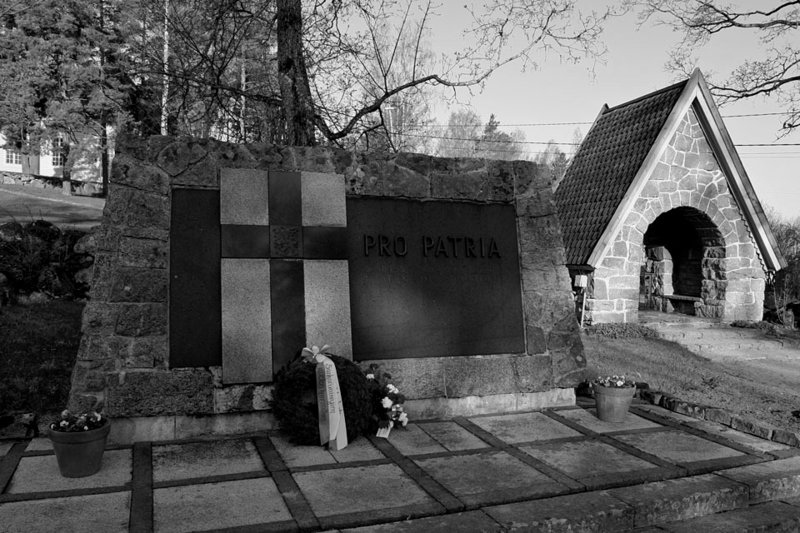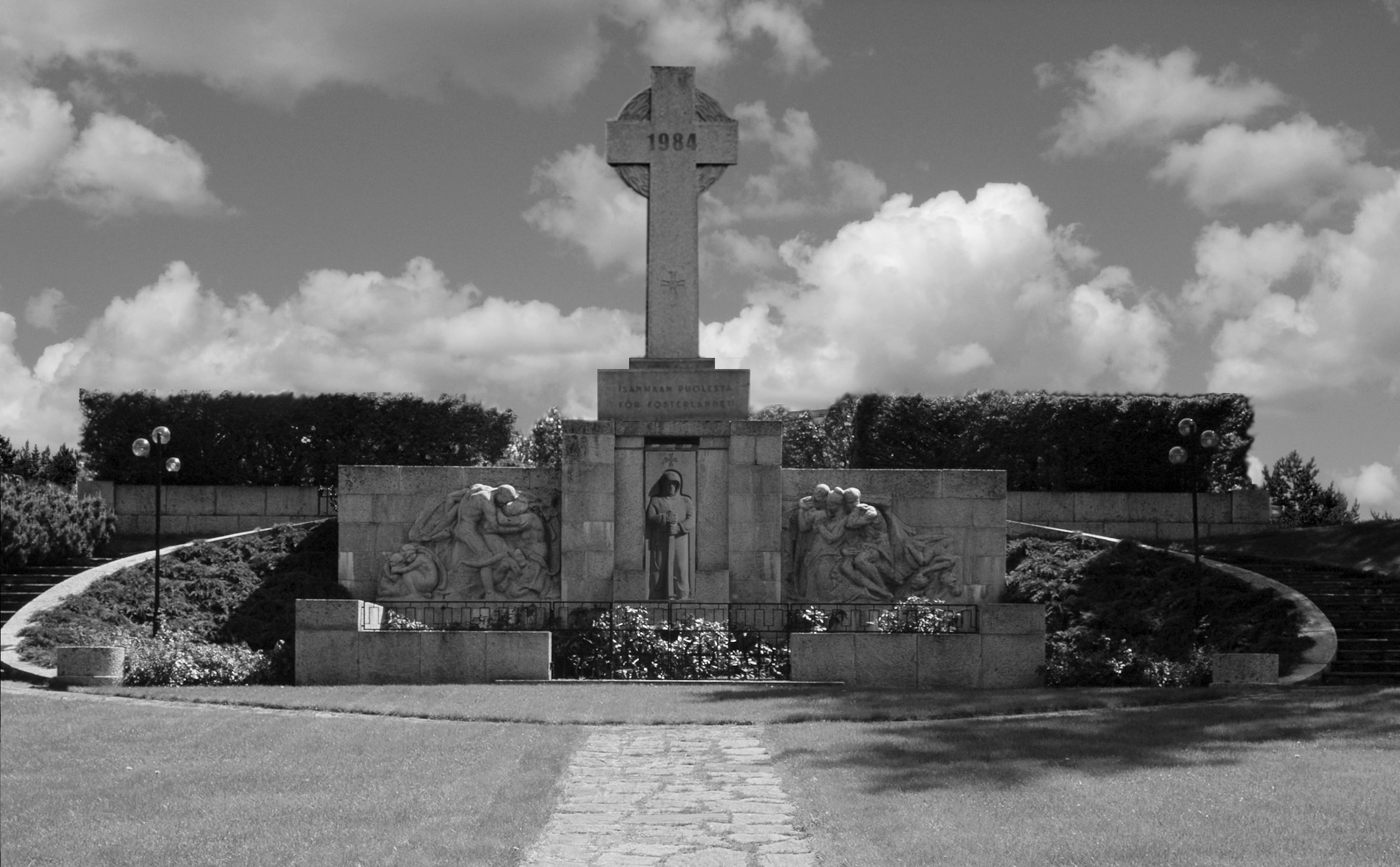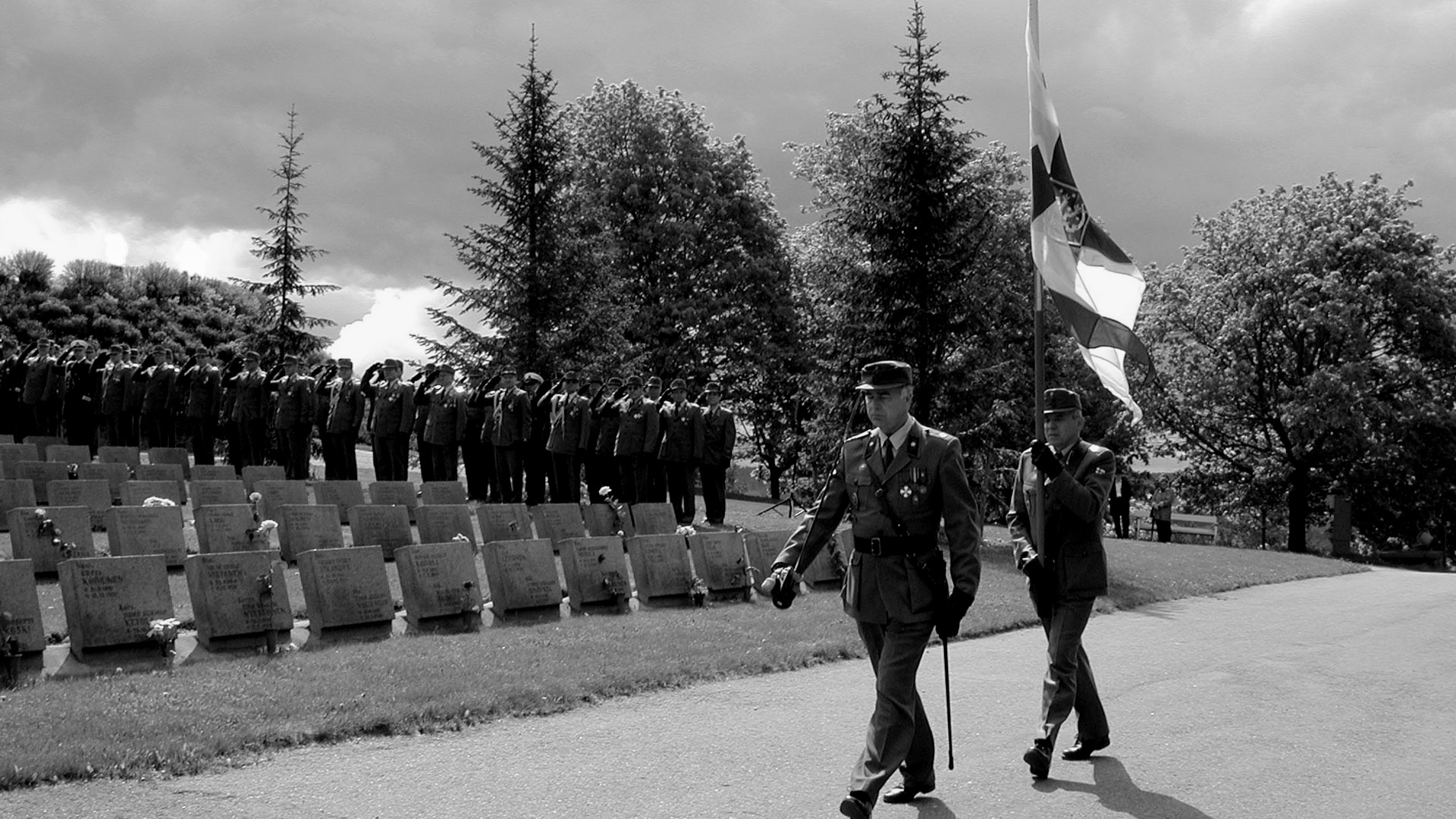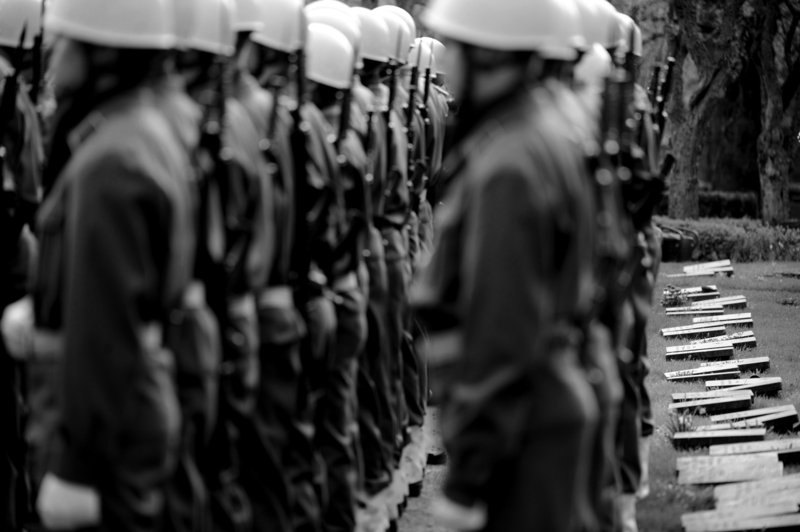Göteborgs-Tidningen... well, I suppose it is hardly out of possibility that someone would restore that name.
You are using an out of date browser. It may not display this or other websites correctly.
You should upgrade or use an alternative browser.
You should upgrade or use an alternative browser.
The Land of Sad Songs – Stories From Protect and Survive Finland
- Thread starter DrakonFin
- Start date
Göteborgs-Tidningen... well, I suppose it is hardly out of possibility that someone would restore that name.
A bid for some old-fashioned respectability by a new ownership now that Gothenburg is the national capital, perhaps?
A bid for some old-fashioned respectability by a new ownership now that Gothenburg is the national capital, perhaps?
How about Göteborgs Handels- och Sjöfartstidning being the leading Swedish magazine on economic and foreign policy issues? The name would probably be more than accurate in covering the way Sweden would be interacting with most of the world...
Anyway, just great to see you're completing this project!
(1) An interesting sidenote: Victor Gunnarsson, who was a suspect in Olof Palme's assassination, moved to the U.S. after he was cleared in the Palme assassination and, sadly, was murdered by the ex-fiancee (who also happened to be a former cop) of a woman he had become romantically involved with (said ex-fiancee is also believed to have killed the woman's mother). The ex-fiancee is still serving time in prison for the murder.
Interestingly, conspiracy theories are popular in regards to both Palme's and Gunnarsson's deaths OTL (though they are more in regards to the former's death than the latter).
BTW, DrakonFin, the US crime series Forensic Files had an episode about Gunnarsson's murder.
Thank you for the information, I have to look into that at some point.
Jukra said:How about Göteborgs Handels- och Sjöfartstidning being the leading Swedish magazine on economic and foreign policy issues? The name would probably be more than accurate in covering the way Sweden would be interacting with most of the world...
Anyway, just great to see you're completing this project!
Maybe it could be an entire family of papers in the capital - the Göteborgs-Tidningen being the general-issue, more respectable morning edition, GT the more tabloid-y evening edition and Göteborgs Handels- och Sjöfartstidning the serious, hard-hitting economic paper?
I am also relieved that the project is almost on the home stretch... I have had doubts several time if I manage to bring it to a conclusion I can live with, but now it seems it will definitely happen by August.
Now, to Navy things. A few days ago I got a question:
General Tirpitz said:What sort of ships the Finnish Navy has?
See the following post for an answer.
Addendum VI. "Heaven Help Us Sailors."
The Finnish Navy's Coastal Fleet in 2014 [Suomen Merivoimat, Rannikkolaivasto][1]
Navy HQ [Merivoimien Esikunta, MerivE], Hamina.
Southern Naval Command [Eteläinen meripuolustusalue, EtMePA], Hamina/Kirkkonummi
1st Guard Squadron [1. Vartiolaivue, 1.VartLv]
Urho-class armed icebreaker (1971): Urho (02), 9600 tons [2]
Valpas-class guard ship (1971): Valpas (30), 540 tons [3]
Tuima-class missile boat (1974): Tuisku (14), Tyrsky (16), 172 tons [4]
R-class patrol boat (1959): Ruissalo (53), Röyttä (55), 110 tons
Transport Squadron [Kuljetuslaivue, KuljLv]
Merikotka-class transport ship (1972): Merikotka (88), 3100 tons [5]
Putsaari-class utility vessel (1966): Putsaari (92), 400 tons [6]
Valas-class transport boat (1979): Vahakari (121), Vänö (723), Mursu (98), 300 tons
Kampela-class transport ferry (1976): two ferries, 300 tons
Kala-class transport ferry (1956): one ferry, 200 tons
Uusimaa Brigade [Uudenmaan Prikaati, UudPr], Hamina/Kirkkonummi
Central Naval Depot [Merivoimien Keskusvarikko, MerivKV], Kirkkonummi
Western Naval Command [Läntinen meripuolustusalue, LäMePA], Rauma/Hanko
Mine Squadron [Miinalaivue, MiLv]
Pohjanmaa-class minelayer (1979): Pohjanmaa (01), 1450 tons
Keihässalmi-class minelayer (1957): Keihässalmi (05), 360 tons [7]
Kuha-class minesweeper (1974): two ships, 90 tons
2nd Guard Squadron [2. Vartiolaivue, 2.VartLv]
Sampo-class armed icebreaker (1960): Sampo (03), 3500 tons
Silmä-class guard ship (1963): Silmä (29), 530 tons [3]
Koskelo-class guard boat (1955): three boats, c. 90 tons [3]
Rauma Coastal Battalion [Rauman Rannikkopataljoona, RauPr], Rauma
General:
”The FNA's Navy suffers from the same general problems as all branches of the Finnish military, save perhaps the Special Military Police – the hardware it uses is old and often in a poor condition and the morale of its soldiers and the cohesion of the units is poor. Because of the minimal (or non-existent) funds available for maintenance (let alone for new purchases), and the need to rely on badly paid officers and conscripted troops, its operational readiness has been estimated to be very low. This means that while on paper the Finnish Navy's OOB seems rather good, in reality many of the ships and boats in its inventory are 1) held together with just duct tape and prayer and 2) only manned with skeleton crews.
Most available funds have been recently used to maintain the two Navy icebreakers to ensure the feasibility and safety of winter navigation in the Finnish coastal waters. The only divergence from this general trend has been the project to modernize the Navy's flagship, the minelayer Pohjanmaa[8], to extend its service life. The project was approved by the National Committee in 2011 and in August 2013 the ship was laid up at the Rauma shipyard to undergo a weapons and electronic systems refit. The project, touted as the first step towards the modernization of the navy, has been criticised as expensive window-dressing by those who have advocated abandoning the minelayer arm altogether and instead using the limited funds to build a new class of guard vessels to replace the aging, often decrepid Valpas, Silmä, Ruissalo and Röyttä in coast guard and SAR duties.
The Navy is commanded by Vice Admiral Tikka, a cautious, pragmatic officer who while sometimes considered in Mikkeli as too accommodating towards the Swedish is also highly regarded among the National Committee for keeping the Navy's ”museum fleet” even nominally operational despite the tight resource constraints.”
Notes:
[1] Only vessels with a displacement of c. 100 tons or over listed.
[2] Apart from icebreaking duties also used as a tender for the Tuima-class missile boats. Both icebreakers used by the Finnish Navy since 1984 were originally operated by the Finnish Maritime Administration.
[3] Valpas, Silmä and the Koskelo-class were originally built for the Finnish Border Guard.
[4] Soviet-made Osa-II-class missile boats, armed with P-15 Termit (SS-N-2 Styx) anti-ship missiles, Finnish designation MtO 66. Operational status questionable.
[5] Former M/S Aschberg (ex-Bore IX), a ro-ro ship built at the Rauma-Repola Rauma shipyard for Höyrylaiva Oy Bore in 1972. Sold to East Germany in 1977. Found by the Finnish Navy off Paldiski on the Estonian coast in late summer 1984, abandoned but floating. After repairs attached permanently to the Navy to enhance the capacity to transport troops and vehicles on the coastal areas.
[6] Originally built as a cable-laying ship, the Putsaari was after the War converted to a multi-purpose vessel.
[7] The old minelayer Keihässalmi should be in reality considered a stationary depot vessel today.
[8] "Ostrobothnia".
Last edited:
With Göteborgs-Posten being the main competitor to Göteborgs-Tidningen?Maybe it could be an entire family of papers in the capital - the Göteborgs-Tidningen being the general-issue, more respectable morning edition, GT the more tabloid-y evening edition and Göteborgs Handels- och Sjöfartstidning the serious, hard-hitting economic paper?
With Göteborgs-Posten being the main competitor to Göteborgs-Tidningen?
If it still exist ITTL, it most likely would be.
That's actually a quite impressive fleet all things considered even if most ships might be death traps. 
Has piracy in the Baltic Sea been a problem after the Exchange? Not that it hasn't been an issue IOTL. Even with these limited capabilities, the Finnish navy might be able to do some anti-piracy missions.
Even with these limited capabilities, the Finnish navy might be able to do some anti-piracy missions.
Has piracy in the Baltic Sea been a problem after the Exchange? Not that it hasn't been an issue IOTL.
That's actually a quite impressive fleet all things considered even if most ships might be death traps.
It is impressive - on paper. Certainly the fact that Upinniemi, one of the two main Finnish Navy bases survived without getting hit by a nuclear weapon (or even any significant conventional air attacks) helped in preserving much of the fleet. The other thing is that many vessels would have been dispersed away from the bigger ports, either by design or accidentally (organization, geography, etc). Finland has a long coast and along with Upinniemi smaller installations survived, as well as important trade ports such as Rauma. The third thing is that the FNA leadership is committed to maintaining a big fleet instead of a functional fleet - several of these vessels are indeed death traps. Consider the Keihässalmi, say, the poster boy for this. ITTL it is theoretically "active duty" - a 57 year old ship that IOTL has been an actual museum vessel since 1994. As such, the old minelayer at least gets some regular maintenance now, which might be more than we can say about it ITTL.
I think it might be very interesting in the Chinese sense what would happen if someone in Mikkeli ordered a full mobilization of the FNA Navy to actually go to war - some pretty black comedy might ensue.
Has piracy in the Baltic Sea been a problem after the Exchange? Not that it hasn't been an issue IOTL.Even with these limited capabilities, the Finnish navy might be able to do some anti-piracy missions.
Not a very big problem because the Swedish are in such a good shape. The Finnish Navy has its uses, though, it is responsible for the Gulf of Finland and the Archipelago Sea and does patrol some of the Baltic coast too, as well as the Ladoga with smaller vessels. Its icebreakers also work jointly with the Swedish ones much along OTL lines. For prestige reasons, the Pohjanmaa has taken part in some Swedish/joint operations in southern Baltic Sea and even outside it a handful of times.
Petike said:Thank you for that list !
It is with a heavy heart that I will soon stop near-religiously updating the timeline's page. Until then, though, I'm finishing everything we know of until now.

You're welcome - and thank you for doing all that work in updating it! The page (and the other wiki pages about P&S and the spinoffs) has been a big help for me to check things in past updates to not make a mess of things. So you have definitely helped me to be able to write a better quality TL.
Last edited:
You're welcome - and thank you for doing all that work in updating it! The page (and the other wiki pages about P&S and the spinoffs) has been a big help for me to check things in past updates to not make a mess of things. So you have definitely helped me to be able to write a better quality TL.
I'm glad to hear that.
Are there coastal patrols in the Kola peninsula?
As Finnish Lapland will be very lightly inhabited after the war, and the logistics towards Kola from Finland would be difficult (with most towns and installations in the area destroyed, as well as roads and railways cut or fallen into disrepair), I think that if the coasts of the peninsula are patrolled, it will be Norwegians with Swedish support. Per Chapter XLV, this is the Swedish-designated "Russian Zone 3 Karelia-Kola", and if there are aid and reconstruction schemes in the Zone, outside the FNA's "Special Administrative Districts" in Central and Southern Karelia (all of which are more south), they are organized by the Swedish or then as joint international ventures.
Addendum VII. The Eternal Vigil

Most official cemeteries in Eastern Finland have a memorial dedicated to people who perished during the War of 1984 and the aftermath. Keeping in line with the official sensibilities of the Finnish National Administration, these memorials are more often than not classicist in style and resemble sites dedicated to those who died during WWII.

Standing at the Old Northern Cemetery in Mikkeli, near a mass grave where at least 1900 men, women and children were buried in 1984-1985, the national monument for the civilian and military dead is a highly representative example of FNA's policy of remembrance. Built in 2004, the memorial includes a monumental cross bearing ”1984” and ”For the Fatherland” (in Finnish and Swedish), as well as the Cross of Liberty, looming over a relief depicting grieving, panic-stricken men, women and children - and of course the central figure of FNA's national iconography, the lone, vigilant sentry. Here he stands below the cross, his head hooded, holding a sword. His stony eyes are turned towards the ground in silent contemplation. The image of the Cross of Liberty repeats here, floating halo-like over the sentry's head.
The sentry is of course a symbol for the military-civilian rule of the National Committee for the Continuation of Government, a shorthand for the Eastern Finnish government's mission and its justification for existence, set in stone. The steadfast, lone protector keeping at bay chaos and darkness, only requiring the people to believe in him in his mission and to follow his orders. Apart from being a memorial to the fallen, the whole ensemble thus also serves as a reaffirmation of the leading ideologies of the National Administration – the Christian faith, Finnish nationalism, civic militarism and authoritarian, quintessentially male leadership.
-JSH


Last edited:
Share: